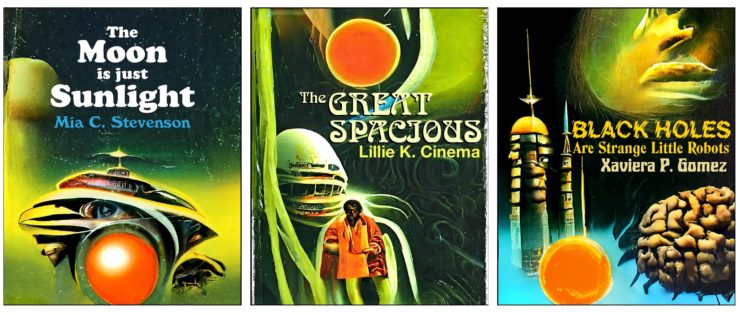The 1970s were a special time, not least because the science fiction paperbacks that graced bookshelves had a very specific look to them—a look that one adventurous soul replicated with the help of AI technology.
Lewis Hackett is the artist who took the time to come up with these covers (pictured above). In an interview with CDM, Hackett gets into the details of the process including using specific CLIP guided diffusion notebooks, as you do.
Buy the Book


Sisters of the Forsaken Stars
“I’m a huge fan of 70s sci-fi artwork and tried various prompts around the theme of ’70s sci-fi book cover artwork’ which already produced some amazing results,” he said. “I fine-tuned the prompt and ran off a batch of about 100 variations with different seed values.”
If that makes sense to you, you know more about burgeoning machine learning capabilities than I do!
As for the title ideas and author names, Hackett asked a program called OpenAI GPT-3 to give him both—he refined the results, however, nudging it to give better answers by saying things to it like, “something more mysterious,” or “something less obvious.”
The results are a delight—you can see three of them in the photo above. The title names are also amazing—who wouldn’t pick up a book called Green Glass is the Color of the Wind or The Moon is Just Sunlight? And the fake author names like Lillie K. Cinema and Syndey W. Brooks would look right at home next to a work by Philip K. Dick or Robert A. Heinlein.
If you’re AI savvy, you can get more details on Hackett’s process in the CDM article. Also check out the article if you’re interested in seeing more faux ‘70s covers.











” green glass is the color of the wind” would also make a killer title for a Giallo movie.
100% would read these.
If you liked these (and I did), you should definitely check out the Paperback Paradise Twitter-feed for some absolutely hysterical custom-made “vintage” SF/Fantasy paperback…errrr…”covers”:
https://twitter.com/paprbckparadise